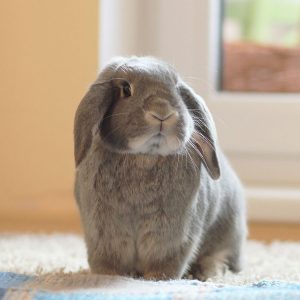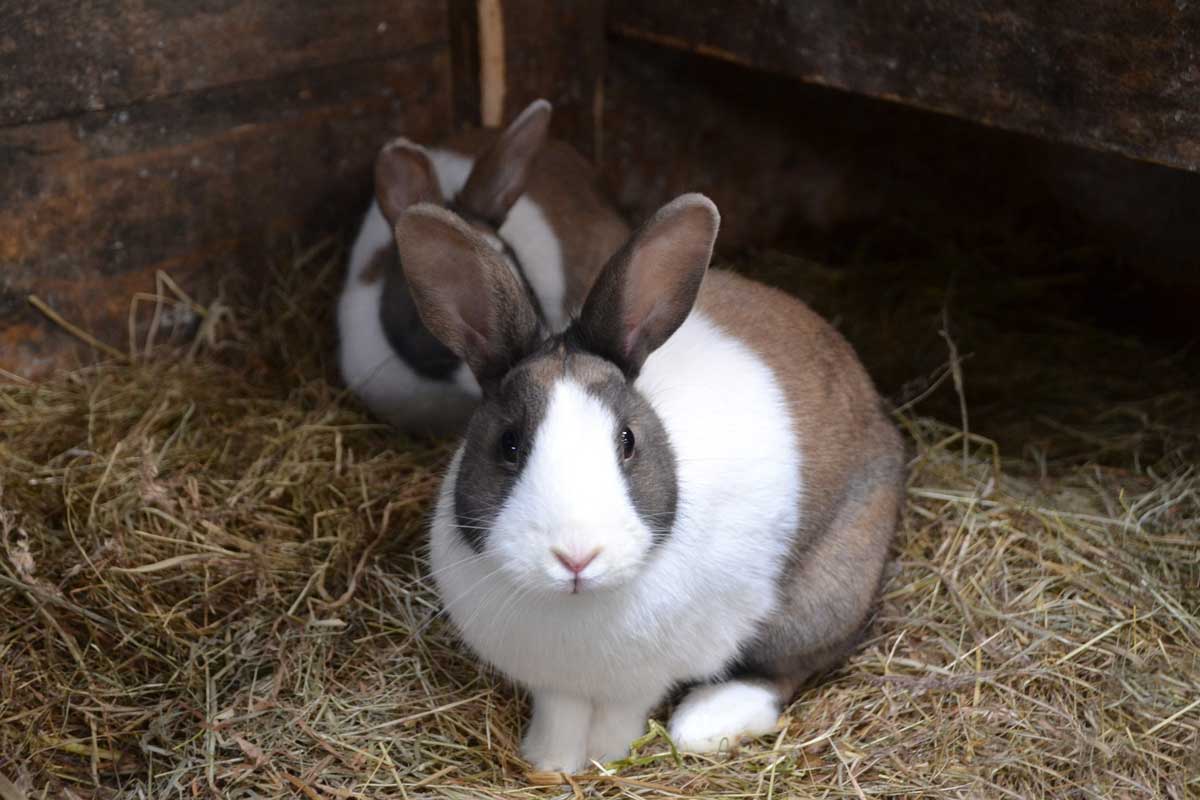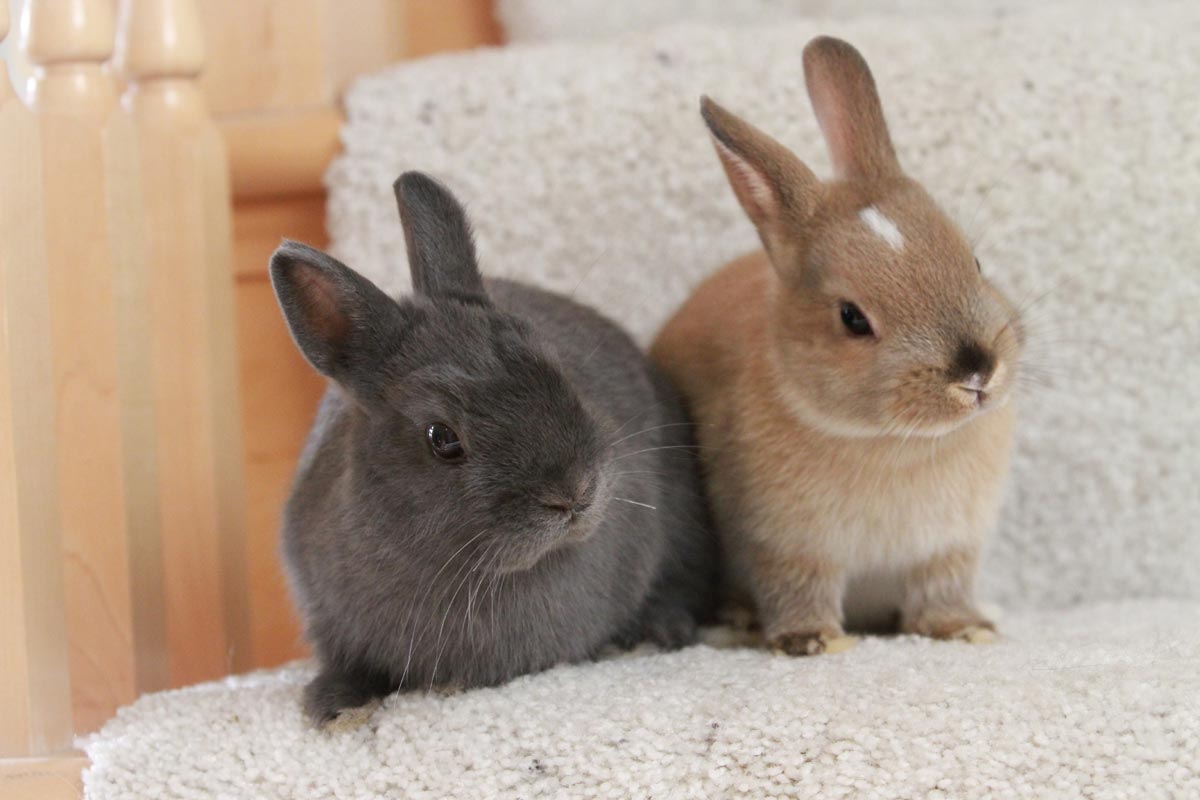Contents

Your rabbit is part of your family, and you love him or her no matter the breed. You might even have a mixed breed rabbit. Learning about rabbit breeds is fun because it’s a bit like tracing your rabbit’s genealogy.
You know a rabbit when you see one. Color, size, fur type, personality, and other traits might vary, but you know that rabbits hop, are furry, and have large ears and small tails. In simple terms, shared traits and the ability to reproduce help differentiate an organism as a species, and further shared traits make members of a species a breed. That’s why the cute, little Netherland Dwarf rabbit looks different than a large, friendly Flemish Giant rabbit even though they are the same species.
Looking Back On Rabbit Breeds
The fluffy rabbit shares a long history with humans. The domestication that brought us our rabbit companions occurred about 1,400 years ago according to a study published in 2014 by researchers at Uppsala University in Sweden. Your furry friend and all rabbits are the species Oryctolagus cuniculus. Known as the European rabbit, this single species includes more than 180 breeds worldwide, as noted by Bob Whitman in his book “Domestic Rabbits & Their Histories.” The O. cuniculus species originated in Southern France and the Iberian Peninsula.
Possible Mistaken Identity
When talking about breeds and species, an important point is that rabbits are not rodents. It’s a common myth that rabbits are rodents. Perhaps this myth persists because rabbits were once classified in the Order Rodentia, but today rabbits, hares, and pikas are classified in their own Order, Lagomorpha. Nothing changed about rabbits to cause this, but people changed how they looked at rabbits. Dietary and anatomical differences are some of the reasons that led to the reclassification of rabbits as lagomorphs instead of rodents.

Exploring Rabbit Breeds
Rabbit breeds are created by selective breeding of the species to reinforce certain traits. Rabbit organizations across the globe help to maintain the various breeds. In the United States, the American Rabbit Breeders Association recognizes 49 rabbit breeds. Two breeds most recently recognized are the Lionhead and the Argente Brun. Below is the complete list of breeds in alphabetical order.
| Rabbit Breeds | ||
|---|---|---|
| American | English Lop | Mini Satin |
| American Chinchilla | English Spot | Netherland Dwarf |
| American Fuzzy Lop | Flemish Giant | New Zealand |
| American Sable | Florida White | Palomino |
| Argente Brun | French Angora | Polish |
| Belgian Hare | French Lop | Rex |
| Beveren | Giant Angora | Rhinelander |
| Blanc de Hotot | Giant Chinchilla | Satin |
| Britannia Petite | Harlequin | Satin Angora |
| Californian | Havana | Silver |
| Champagne D’Argent | Himalayan | Silver Fox |
| Checkered Giant | Holland Lop | Silver Marten |
| Cinnamon | Jersey Wooly | Standard Chinchilla |
| Crème D’Argent | Lilac | Tan |
| Dutch | Lionhead | Thrianta |
| Dwarf Hotot | Mini Lop | |
| English Angora | Mini Rex | |
The British Rabbit Council recognizes more than 50 rabbit breeds. In any rabbit breed organization, a breed standard is set for each rabbit breed, and this becomes the standard of perfection that rabbit breeders aspire to as they selectively breed these furry cuties.
ARBA Breed Recognition
Gaining breed recognition by the American Rabbit Breeders Association is a process that takes many steps and several years. According to ARBA, any proposed rabbit breed must be new, not an existing breed that merely has a different coat structure or ear carriage. The rabbit breeder, who must be an ARBA member, must then obtain a Certificate of Development from ARBA, which is a process all its own.
Once awarded a Certificate of Development, the rabbit breeder must provide various documents and meet deadlines, including showing the breed successfully at three ARBA conventions within five consecutive years, and never having a failed showing two years in a row. Multiple rabbits of the breed must be presented at each showing. Various other rules apply, and failure can mean that official breeder status is passed on to the next breeder who has a Certificate of Development for the proposed breed.
This recognition process ensures that “the new breed is capable of propagating its unique characteristics from generation to generation, in a consistent and qualitative manner, and that the new breed is worthy of admission to the American Rabbit Breeders Association Standard of Perfection,” as stated in the ARBA Standard of Perfection.

Changing Popularity
All rabbit breeds have their fans. In the early days of rabbit keeping, the focus was more on rabbits as stock animals rather than companions. Because of this, larger breeds were more popular in the early part of the 20th Century. In the United States today, rabbits are popular as members of the family and the smaller breeds reign. The Netherland Dwarf, Mini Rex, Mini Lop, Holland Lop, and Dutch were rabbit breeds with the most entries at the ARBA convention in 2012. These breeds range from the tiny 2.5-pound Netherland Dwarf to the 6.5-pound Mini Lop. Bucking the trend toward smaller breeds was the New Zealand, which can weigh up to 12 pounds.
Fun Rabbit Breed Facts
Enjoy a few fun facts about rabbit breeds, as recognized by the American Rabbit Breeders Association.
- Rabbit breeds with the most color varieties include Angoras (English, French, Satin), Holland Lop, Jersey Wooly, Lops (English, French, Mini), Mini Rex, and Netherland Dwarf.
- Rabbit breeds are classified into five body types: full arch, semi-arch, compact, commercial, cylindrical.
- The only rabbit breed to have the cylindrical body type is the Himalayan.
- The rabbit with the longest ears is the English Lop.
- Besides the normal rabbit fur type, there are also rex (very plush), satin (somewhat transparent, which adds a sheen) and wooly.
- Only two breeds of rabbit have rex fur: the Rex and the Mini Rex.
- Rabbit breeds that have wooly fur are the American Fuzzy Lop, Angoras (English, French, Giant, Satin), and Jersey Wooly.
- The rabbit breed that mixes wooly fur and normal fur is the Lionhead.




